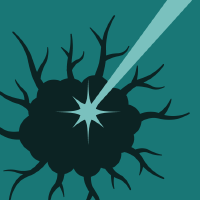Topic Menu
► Topic MenuTopic Editors


Non Herbal Nutraceutical, Probiotic, Vitamins and Fatty Acids in Cancer
Topic Information
Cancer is a multifactorial disease characterized by uncontrolled cell growth and the acquisition of metastatic properties. Globally, cancer remains a major human health problem. Therefore, it is very important to prevent or treat different types of cancer. In recent years, significant advances in anticancer therapy have involved the use of many plant-derived compounds or structural analogues derived from them. Medicinal plants, together with non-herbal nutraceuticals (e.g., fatty acids, probiotic), constitute a fundamental source of active ingredients capable of providing new molecules with anticancer activity and new molecular structures capable of inspiring the design of derivatives with improved therapeutic properties. Although many natural products of plant origin have already been isolated and characterized, the molecular mechanisms underlying their therapeutic effects remain unexplored. This Topic aims to contribute original articles and reviews (e.g., comprehensive review and systematic reviews) to the identification of chemopreventive agents that delay or block the carcinogenesis of human cancers.
Prof. Dr. Raffaele Capasso
Dr. Carla Cirillo
Dr. Paola Amero
Topic Editors
Keywords
- cancer
- chemoprevention
- medicinal plants
- secondary metabolites
- microbiota and cancer
- pharmacological interactions
- natural products
- preclinical and clinical trials in cancer
- nutraceuticals and cancer
- molecular mechanisms
Participating Journals
| Journal Name | Impact Factor | CiteScore | Launched Year | First Decision (median) | APC |
|---|---|---|---|---|---|

Biology
|
4.2 | 4.0 | 2012 | 18.7 Days | CHF 2700 |

Biomolecules
|
5.5 | 8.3 | 2011 | 16.9 Days | CHF 2700 |

Cancers
|
5.2 | 7.4 | 2009 | 17.9 Days | CHF 2900 |

Current Oncology
|
2.6 | 2.6 | 1994 | 18 Days | CHF 2200 |

Onco
|
- | - | 2021 | 18.3 Days | CHF 1000 |

MDPI Topics is cooperating with Preprints.org and has built a direct connection between MDPI journals and Preprints.org. Authors are encouraged to enjoy the benefits by posting a preprint at Preprints.org prior to publication:
- Immediately share your ideas ahead of publication and establish your research priority;
- Protect your idea from being stolen with this time-stamped preprint article;
- Enhance the exposure and impact of your research;
- Receive feedback from your peers in advance;
- Have it indexed in Web of Science (Preprint Citation Index), Google Scholar, Crossref, SHARE, PrePubMed, Scilit and Europe PMC.


